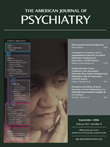The field of child and adolescent psychiatry may seem overwhelming to trainees and clinicians who specialize in other areas. Not only is there general apprehension about dealing with diagnosis and treatment of mental illness in general, the prospect of doing so in children, where development (normal, deviant, delayed), assessment differences (knowing how to talk to children at different ages as well as to their parents), and the need to deal with different systems (e.g., schools, social services) adds an additional layer of complexity. Fortunately, the Concise Guide to Child and Adolescent Psychiatry is just what the doctor (young and old) ordered. Although the authors intended this handbook to be used by “the novice in child and adolescent psychiatry who has some knowledge of adult psychiatry” (p. 1), we feel that it is an excellent resource for medical students, residents in pediatrics, neurology and general psychiatry, fellows in child and adolescent psychiatry, and general psychiatrists in practice who want a brief review of topics that they don’t frequently encounter.
The book is written in nine well-organized chapters that are clustered into three broad areas. Chapter 1, Introduction, and chapter 2, Evaluation and Treatment Planning, help medical students and clinicians who are still learning to organize their approach to children with possible mental health problems. There are excellent summary tables (for instance, there is one on psychoeducational tests commonly used to evaluate children and one of structured interviews used in research) that those preparing for exams would do well to review.
Chapters 3 through 6 focus on axis I disorders usually first diagnosed in infancy, childhood, or adolescence, “adult” disorders that may begin in childhood or adolescence, and developmental disorders. Each disorder is summarized thoughtfully by clinical description, epidemiology, comorbidity, etiology, course and prognosis, evaluation, differential diagnosis, monitoring, and treatment. The summaries are inclusive and are valuable as a brief review for everyone.
Chapters 7 through 9 cover special circumstances and treatment. Chapter 7, Special Clinical Circumstances, is valuable as an overview for physicians who encounter child and adolescent emergencies and situations that require expert assessment and prompt intervention. Topics include suicide, child maltreatment, sexual abuse and rape, out-of-control behavior, family transitions, adolescent pregnancy, obesity, physically ill children, and children of psychiatrically ill parents. The section on family transitions is particularly helpful regarding specific interventions for different developmental stages. Chapter 8, Psychopharmacology, describes medication indications and dosage, developmental toxicity, outcome, adherence to treatment, and ethical issues. Unfortunately, any book that addresses psychopharmacological treatment is out of date before it is published, and this is no exception. The current controversy surrounding selective serotonin reuptake inhibitors and antidepressant treatment in children is not addressed because it postdates the book by a couple of years. Again, however, the tables are especially helpful.
Chapter 9, Psychosocial Treatments, provides useful information on methods of engaging children and adolescents to enhance communication and reduce resistance.
Also valuable is information on service delivery as it pertains to a continuum of care, especially emphasizing psychiatric disorders that are not being successfully treated unless the family dynamics and the school environment are considered.
In summary, this handbook provided a readable, succinct overview of child and adolescent psychiatry and covers multiple topics. There are a reasonable number of references for each topic and many useful tables throughout. The main strength of the book lies in its breadth while maintaining its brevity. It provides a quick review for the experienced child psychiatrist and is especially useful for medical students, residents, fellows, and non-child psychiatrists.

